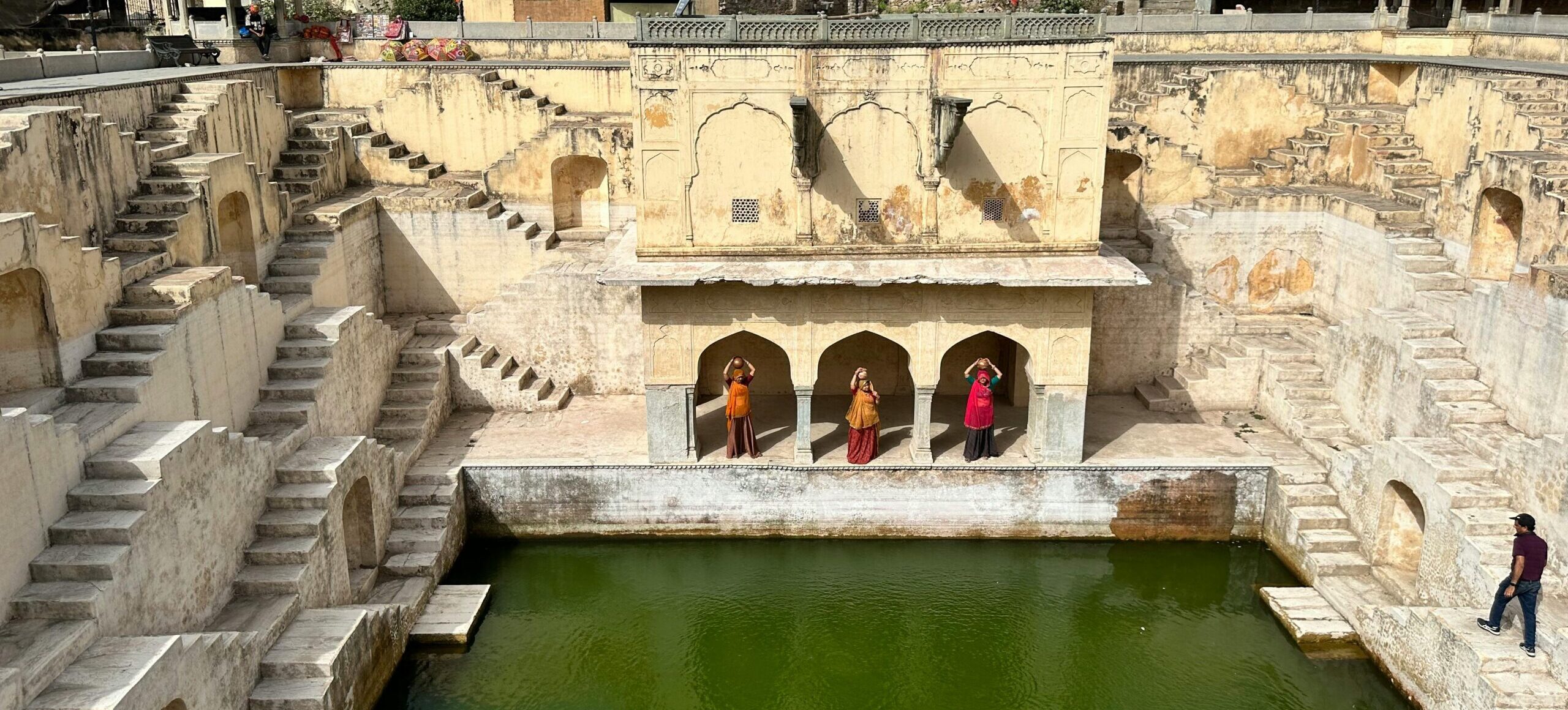Hidden in the ancient town of Amer, close to Jaipur, Panna Meena ka Kund is a peaceful haven that harmoniously displays the cultural and architectural genius of Rajasthan. This 16th-century stepwell, with its glorious symmetrical staircases and delicate detailing, is proof of ancient India’s innovative water conservation methods. Too often ignored by mass travelers visiting Amber Fort, the Panna Meena Kund Jaipur provides a serene and scenic experience ideal for history buffs, photographers, and inquisitive explorers.
In addition to its aesthetic value, centuries of local legends, customs, and engineering ingenuity define Panna Meena ka Kund, making it among the most intriguing and underappreciated sites in Jaipur.
Panna Meena Ka Kund History
Panna Meena Kund is situated at Amber in the Jaipur district. It is also known as Panna Meena Bawri. This Kund is an architectural gem. There is an incredible stepwell here that reflects the grandeur of architecture. There are many stories behind the name of this pond, Panna Meena. Before Rajput rule in Amber, the Meena rule prevailed in the 8th-9th century. This pond was named after one of their brave kings, Meena. According to the second legend, in the Rajput rule, a person working in Maharaja Jai Singh’s court was named Panna Meena. It was he who gave the present shape to this kund. To honor his work, this kund was named after him as Panna Meena.
Originally constructed for rainwater harvesting and community use, the Panna Meena Kund served as a vital water source and a social gathering place for villagers. Located near Amber Fort, it also functioned as a resting spot for travelers and pilgrims, making it an important part of Amer’s cultural and daily life.
Panna Meena Ka Kund Architecture
Panna Meena ka Kund, Jaipur, is an excellent example of 16th-century Rajput architecture. The stepwell is constructed of yellow sandstone and lime mortar in a square plan with beautifully symmetrical zigzag staircases on three sides, and one side features a two-story structure for relaxation and changing dress. These staircases include almost 1800 narrow steps, designed in a criss-cross manner that produces an impression of complexity and geometric balance.
The Panna Meena Kund in Jaipur is around 200 feet deep, providing access to water held deep beneath the ground, particularly during Rajasthan’s prolonged dry seasons. The variety in stairs ensured that individuals could access water independent of how low the level fell.
One of the most fascinating facts regarding the kund is its natural air conditioning system — the temperature at the bottom of the stepwell is almost 9°C lower than at the top. This drastic temperature drop rendered the place a favorite getaway from the blistering desert sun, offering water and relief from hot summers.
On each corner of the stepwell stands a finely sculpted chhatri (pavilion), which villagers and travelers used as a shaded resting area. The design becomes part of the architecture, effortlessly merging utility with visual splendor, a testament to the sophisticated engineering and community-minded thinking of the period.
The locals are convinced that it’s not possible to climb back up using the same staircase they came down from, adding to its mystique — a contention based on the optically confusing, yet beautifully proportioned, design of the stairs. This doesn’t just add to its charm but makes Panna Meena ka Kund, Jaipur, a standout and memorable engineering wonder in Jaipur’s heritage landscape.
Why Panna Meena ka Kund Was Built:
Panna Meena Kund was constructed during the 16th century as a reliable water reserve system in Amer’s dry area, close to Jaipur. The stepwell was designed to collect and store rainwater and provide constant access to water for drinking, bathing, washing, and irrigation purposes during the dry season when water shortages were prevalent.
Aside from its functional use, the kund also served as a social forum, where people gathered to socialize, rest, and conduct rituals. Its location close to Amber Fort made it an easy stop for travelers and soldiers alike, providing them with water and a place to rest from the heat. The construction is evidence of ancient Indian water management ingenuity and how architecture was employed to satisfy environmental as well as social demands.
Panna Meena Ka Kund Timings
The Panna Meena Ka Kund timings are from 9:00 A.M. to 5:00 P.M.
Panna Meena Ka Kund Ticket Price
The Panna Meena Ka Kund entry fee is free.
Best time to visit Panna Meena Ka Kund
The ideal time to see Panna Meena ka Kund, Jaipur, is during the winter season, between October and March, when the weather is pleasant in Jaipur and perfect for touring.
A morning or late afternoon visit will help you skip the direct sunlight and snap in the soft, golden light that illuminates the symmetry and features of the stepwell — ideal for photography.
Panna Meena Ka Kund Location
You can easily reach Jaipur by train, bus, and flight. You can easily reach Panna Meena Ka Kund by private taxis, e-rickshaws, buses, and cabs. There are several transport options available to reach Panna Meena Ka Kund, Jaipur. It is very close to Amber Fort and Jagat Shiromani Temple, and you can easily reach it by walking from Amber Fort or Jagat Shiromani Temple.
Conclusion
Panna Meena Kund Jaipur is an outstanding example of India’s ancient water architecture that is poised both in terms of functionality and aesthetic beauty. Situated close to the Amber Fort in Jaipur, this 16th-century stepwell was not only an efficient means of water conservation for the dry area of Rajasthan but also a social meeting point for the inhabitants of the place. Its bilateral steps, geometric accuracy, and historical importance make it a precious cultural and architectural heritage location. It is a contemporary witness to the innovative skills of traditional Indian engineering and continues to draw tourists from across the globe, proving the timelessness of India’s architectural excellence.



